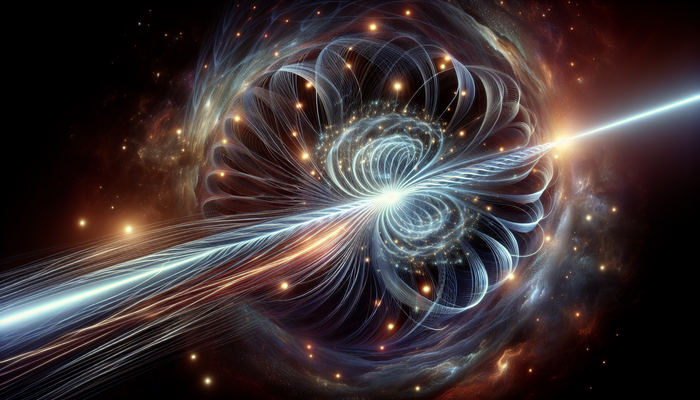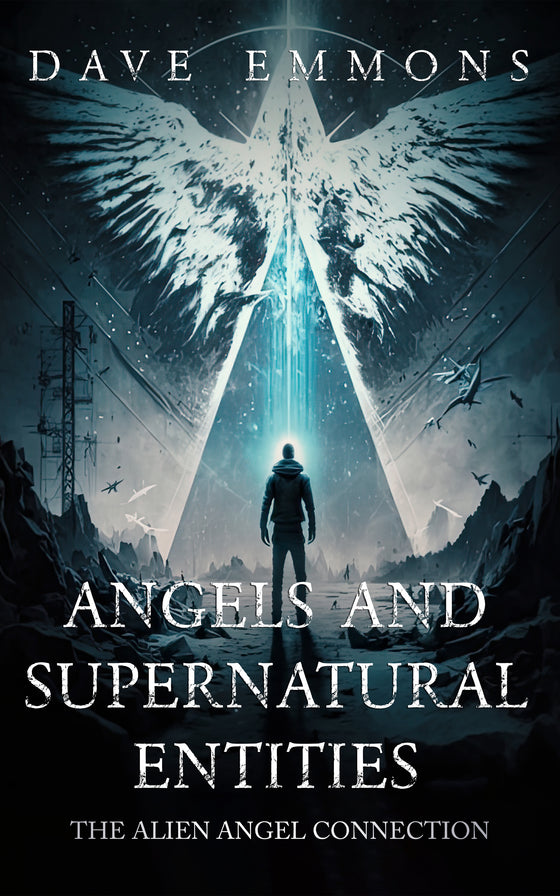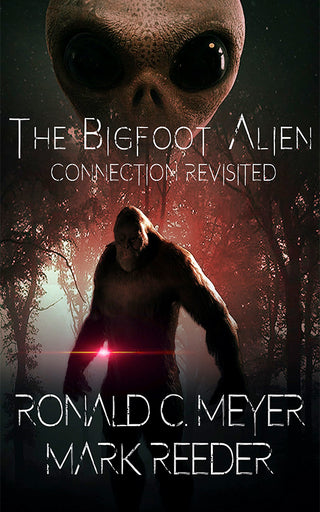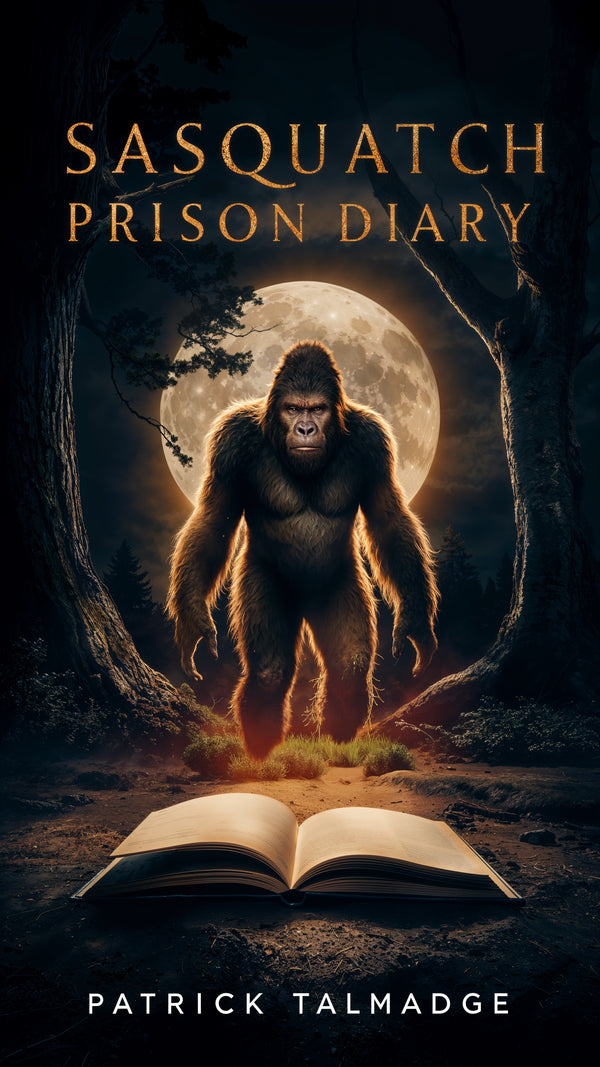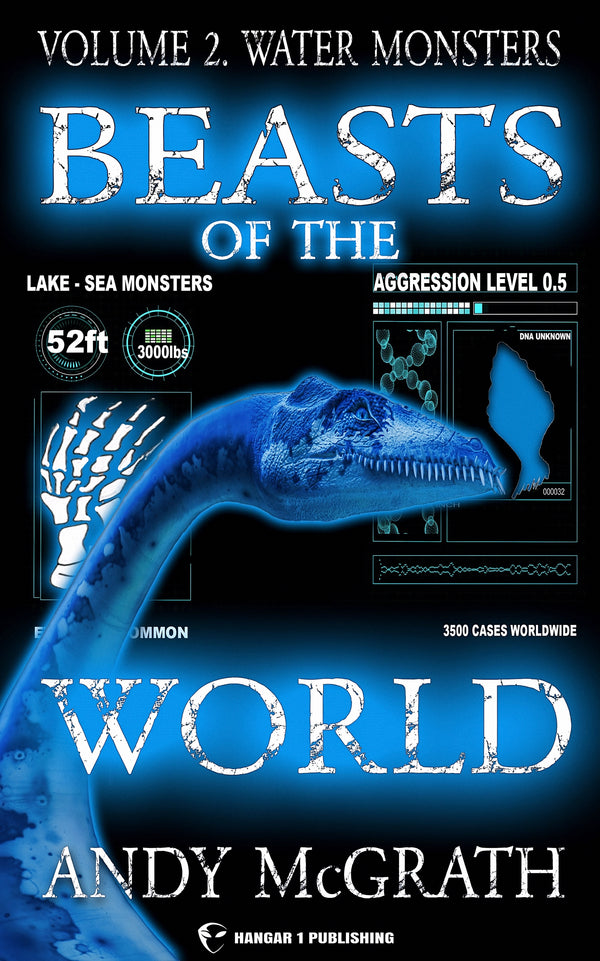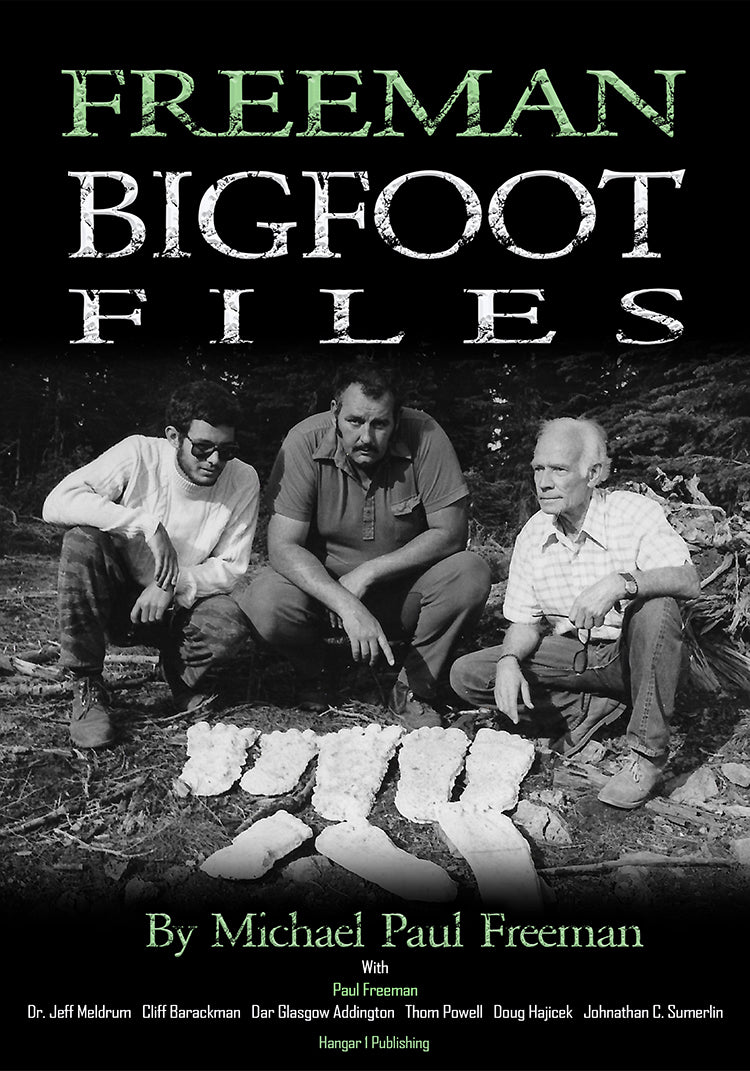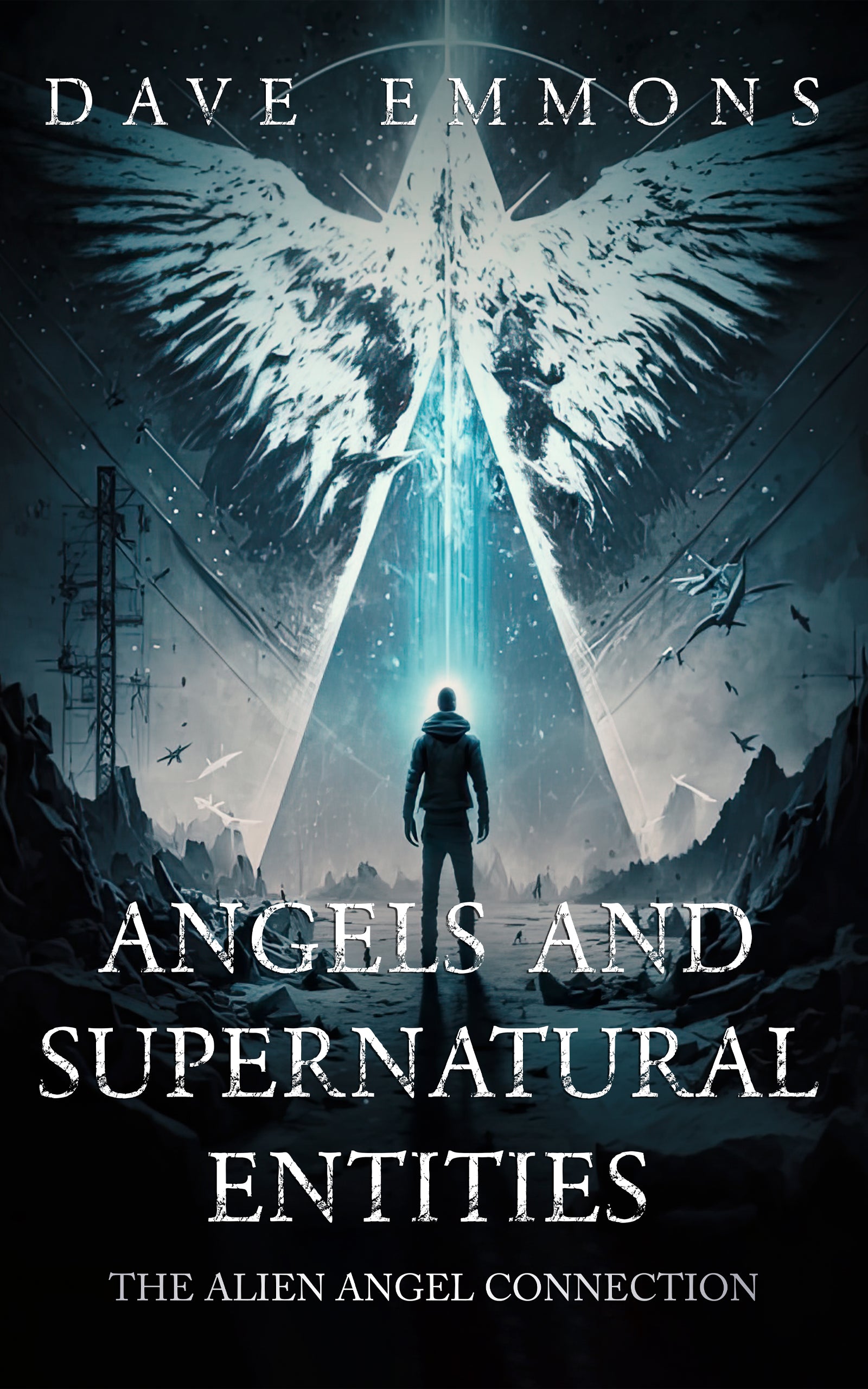Exploring the Parallel Universe Theory

By Elaine Westfield, Ufologist
: A Journey Beyond Our Reality
Have you ever caught yourself daydreaming about a world where things turned out just slightly differently? Maybe one where you finally mastered that tricky piano piece, or perhaps one where you did get that acceptance letter to Hogwarts? It's a common flight of fancy, this yearning for second chances, for alternate realities where maybe, just maybe, you always plug in your USB cable correctly on the first try. It’s the stuff of countless stories, the backbone of beloved science fiction franchises. But what if I told you this idea isn't just confined to the realm of imagination?
The central, truly mind-bending question echoing through the halls of modern physics is this: Could our entire universe – everything we can see, touch, and measure – be just one tiny island in an unimaginably vast cosmic ocean, teeming with other universes? It sounds outlandish, I know. Yet, the concept of parallel universes, often collected under the umbrella term "multiverse," isn't just a plot device anymore. It’s a startling possibility emerging from the very frontiers of theoretical physics, a potential consequence of our deepest understanding of quantum physics, cosmology, and the fundamental nature of reality itself.
So, what is this multiverse? In essence, it's a hypothetical collection of potentially infinite universes, including our own, existing side-by-side, perhaps with entirely different laws, constants, histories, and maybe even different versions of you and me. It’s crucial, though, to understand that the multiverse isn't a single, monolithic theory cooked up in isolation. It’s not something physicists just decided should exist. Instead, it's a prediction, a consequence that seems to almost unavoidably pop out of the mathematics when we push theories like quantum mechanics, cosmic inflation, and string theory to their logical conclusions.
Join me, then, on a journey beyond the familiar. Let's explore the scientific ideas that hint at these other worlds, examine the different flavors of parallel universes theorists propose, and consider the thrilling, sometimes deeply unsettling, implications. Why does this concept grip the minds of scientists and philosophers alike? Because it fundamentally challenges our very perception of reality, forcing us to ask: Is what we see truly all there is?
The Quantum Multiverse: Where Every Possibility Branches into Reality
To begin understanding one of the most popular, and perhaps strangest, routes to parallel universes, we need to shrink down our perspective – way down. Welcome to the world of quantum mechanics, the physics governing the incredibly tiny realm of atoms and subatomic particles. It's a place where our everyday intuition utterly fails us. Here, particles don't behave like predictable little billiard balls; instead, they exist in a fuzzy state of possibilities. One of the cornerstone ideas is "superposition," meaning a particle, like an electron, can simultaneously exist in multiple states – spinning up and spinning down, for instance – until we try to measure it.
This leads directly to what physicist Peter Byrne calls quantum mechanics' "dirty little secret": the measurement problem. The mathematical description of a quantum system, the "wave function" (often represented by Schrödinger's famous equation), evolves smoothly, describing all the possibilities. Yet, the moment we make a measurement, poof, we only ever see one definite outcome. The electron is spin up, or it is spin down. The standard explanation, often called the Copenhagen Interpretation championed by giants like Niels Bohr, posits that the act of observation mysteriously "collapses" the wave function, forcing reality to pick just one path.
Enter Hugh Everett III, a brilliant Princeton graduate student in the 1950s. Everett found this idea of a magical collapse deeply unsatisfying. As Schrödinger himself had pointed out years earlier, there was nothing in the core equations dictating this collapse. Everett asked: What if the math is telling us something profound? What if all the possibilities described by the wave function are real?
This was the birth of the Many-Worlds Interpretation (MWI). Everett proposed that the wave function never collapses. Instead, every time a quantum measurement or interaction occurs, reality itself branches. The universe literally duplicates. In one universe, the physicist measures the electron as spin up. In a completely separate, equally real universe, an identical physicist measures the electron as spin down. Think of Schrödinger's infamous cat paradox: the cat in the box linked to a quantum trigger. Before opening the box, the cat is in a superposition of alive and dead. According to MWI, opening the box doesn't force a collapse; it causes the universe to split. In one branch, you find a live cat; in the other, a dead one. Both scenarios play out.
Everett originally used a lovely analogy, comparing this branching to an amoeba splitting into two identical daughter cells. Each daughter, if it could remember, would share the same past up to the split, but then embark on its own unique future. This branching isn't just happening in labs; since everything is made of quantum stuff, it's happening constantly, everywhere, with every quantum flicker.
The implications are staggering. This isn't just about electrons or cats; it extends to us. Every choice you make, every random event, potentially splits your reality. Chose coffee over tea this morning? There’s another you, in another universe, enjoying that cuppa. The "infinite number of Yous" isn't just a sci-fi trope; it's a direct consequence of taking quantum mechanics at face value, as interpreted by Everett. Suddenly, as physicist Michio Kaku provocatively asked, the question of morality arises: "Why shouldn’t you do something that is considered to be morally wrong in this universe, if you can get away with it in another?"
From a physics perspective, MWI is appealing because it’s mathematically cleaner. It removes the need for the ad-hoc collapse postulate. The universe simply follows the Schrödinger equation. In a way, it restores determinism: every possible outcome does happen, 100% of the time, just in different, non-communicating branches. We only experience our branch, our sliver of the multiverse.
Of course, it's not without its challenges. The biggest philosophical hurdle remains probability. If a quantum event has a 30% chance of outcome A and a 70% chance of outcome B, and both happen in different worlds, what does the 30/70 split actually mean? Why do we seem to perceive probabilities if all outcomes are realized? This question fuels intense debate among physicists and philosophers, particularly groups like the "Everett school" at Oxford. Furthermore, the sheer extravagance of countless universes constantly splitting off feels, as John Wheeler (Everett's own supervisor) eventually felt, like "too great a load of metaphysical baggage."
Despite these difficulties, the MWI remains a leading interpretation. Intriguingly, the field of quantum computing, which harnesses superposition in "qubits" to perform calculations far beyond classical computers, is seen by some, like physicist David Deutsch, as potential indirect evidence. How can a quantum computer explore so many possibilities simultaneously? Deutsch argues it's performing calculations across parallel universes. While most quantum computer scientists don't necessarily subscribe to MWI, their work undeniably operates within the strange reality it describes.
The Cosmological Multiverse: A Sea of Cosmic Bubbles
Let's now zoom out from the quantum realm to the grandest stage imaginable: the cosmos itself and its very origin. Our best picture of the universe's beginning involves the Big Bang, but just before that fiery expansion, theorists believe something extraordinary happened: cosmic inflation. Imagine, in the first minuscule fraction of a second (something like 10^-35 seconds!), the universe underwent a period of absolutely explosive, exponential growth, swelling from smaller than an atom to vastly larger than our currently observable region. Physicist Alan Guth and others proposed inflation in the early 1980s to explain some key features of our universe, like why it looks so remarkably uniform and flat on large scales.
Inflation has been incredibly successful, making predictions confirmed spectacularly by observations of the Cosmic Microwave Background (CMB) – the faint afterglow of the Big Bang, captured by probes like COBE, WMAP, and Planck. But here's where it gets really wild: a consequence of many inflation models is that this hyper-expansion might not have stopped everywhere at the same time. It could be "eternal inflation," still raging in unimaginably distant regions of space.
As pockets of this inflating space randomly transition to a lower energy state and stop inflating, they "bubble off" to form distinct universes, each potentially undergoing its own Big Bang. Our entire observable universe, in this picture, is just one such bubble adrift in a vast, eternally inflating ocean, a "multiverse" of countless other bubbles.
Why haven't we bumped into our neighbors? Because, according to this picture, the inflating space between the bubbles is expanding faster than the speed of light. Think of it like ships sailing away from each other on an accelerating ocean, as Neil deGrasse Tyson described it. Their horizons shrink, and they become causally disconnected – forever unable to signal or reach one another. We are trapped within our own cosmic bubble.
What makes this "Level II Multiverse" (in Max Tegmark's classification) particularly fascinating, especially when combined with ideas from string theory, is the possibility that the fundamental rules could change from bubble to bubble. Imagine each bubble cooling down from the inflationary inferno with slightly different physical constants – a different strength of gravity, a different charge on the electron. The values of these constants in our universe appear exquisitely "fine-tuned" to allow for the formation of stars, planets, and ultimately, life. If they were tweaked even slightly, complexity couldn't arise. Steven Weinberg pointed out that the multiverse offers a potential explanation: if countless bubble universes exist, each with random physical laws, it's no surprise that we find ourselves in one of the rare bubbles where the conditions happened to be just right for observers like us to evolve. Most other bubbles might be sterile, lifeless wastelands.
Can we test this? Directly seeing another bubble is impossible due to the vast distances and superluminal expansion. However, scientists like Anthony Aguirre and Matt Johnson have theorized that if our bubble collided with another one long ago, it might have left a detectable imprint – perhaps a cold or hot spot – on the CMB. Searches using WMAP and Planck data have looked for such "bruises," but no statistically significant evidence has been found yet. This hasn't stopped some sensationalist headlines, like the ones incorrectly linking University of Hawaiʻi research on Antarctic cosmic rays to parallel universes – a cautionary tale about misinterpreting anomalous data. The hunt for cosmic fingerprints continues, though.
Membranes, Extra Dimensions, and String Theory: Our Universe as a Surface
Another avenue leading towards parallel universes comes from the ambitious quest to find a "theory of everything" – a single framework that can unite the two pillars of modern physics: Einstein's General Relativity, which describes gravity and the universe on large scales, and Quantum Mechanics, which governs the tiny realm of particles. These two theories, as Brian Greene puts it, are "ferocious antagonists" when forced together, their mathematics clashing, especially when trying to describe extreme environments like the Big Bang or the inside of a black hole.
String theory is perhaps the most well-known candidate for such a unification. It replaces the idea of point-like elementary particles with unimaginably tiny, vibrating strings. Different vibrational patterns correspond to different particles (electrons, quarks, photons, etc.). Think of it like the different notes produced by the vibrating strings of a violin. A remarkable feature is that for the mathematics of string theory (or its more recent evolution, M-theory, which includes membranes) to work consistently, it often requires more spatial dimensions than the three we perceive. Typically, theories call for 10 or 11 dimensions in total.
If these extra dimensions exist, where are they? The prevailing idea is "compactification" – these extra dimensions are curled up incredibly tightly, perhaps on scales far smaller than an atom, at every point in our familiar space, making them undetectable to our current probes.
This higher-dimensional picture opens the door to the "braneworld" scenario. Imagine our entire 3-dimensional universe is just a vast "membrane" or "brane," floating within a higher-dimensional space often called the "bulk." Other branes, representing entirely separate parallel universes, could also be floating in this bulk. Like pages in a newspaper existing within our 3D world, these brane-universes could be physically very close to ours – "millimeters away" as one source suggests – but separated by the imperceptible extra dimensions.
Could these branes interact? Possibly. Gravity, uniquely, is thought by some theorists to be able to propagate through all dimensions, potentially leaking between branes. Some speculative cosmological models even propose that the Big Bang itself was triggered by the collision of two such branes smashing together in the bulk.
This leads to another fascinating, though highly speculative, idea: "shadow matter" or "mirror matter." What if dark matter, the mysterious invisible substance that makes up most of the matter in the universe and interacts only through gravity, is actually ordinary matter residing on a parallel brane or within the extra dimensions? There could be shadow galaxies, shadow stars, maybe even shadow life, existing right alongside us, completely invisible except for their gravitational pull.
How could we possibly test such ideas? Again, direct observation of branes or extra dimensions is beyond our reach. However, indirect evidence is being sought. Particle colliders like Fermilab's Tevatron (now retired) and CERN's Large Hadron Collider (LHC) smash particles together at immense energies. One hope is that these collisions might produce particles, like the hypothetical graviton (the carrier particle of gravity), that can escape our brane and fly off into the extra dimensions. If this happened, the particle would carry energy away with it. By meticulously measuring the energy before and after a collision, scientists look for "missing energy" that could signal the existence of these hidden dimensions and, by extension, the braneworld picture. It's a delicate process described as "looking for nothing," searching for tiny discrepancies that might betray a much larger, hidden reality.
Tegmark's Hierarchy: Classifying the Multiverse Landscapes
With all these different ideas floating around – quantum branches, cosmic bubbles, hidden dimensions – it can get a bit dizzying. Thankfully, MIT cosmologist Max Tegmark provided a helpful framework, a sort of taxonomy for the multiverse, classifying the proposals into four distinct levels. It's a useful way to organize our thinking about these parallel realities.
Level I: Beyond Our Horizon
This is the most straightforward type. It simply assumes space is infinite (or practically infinite) and applies the laws of probability. Given enough space and a finite number of ways particles can arrange themselves locally, every possible configuration within a volume the size of our observable universe (our "Hubble volume") must repeat somewhere out there, infinitely far away. These universes have the same laws of physics as ours, just different starting conditions leading to different histories. Think of finding exact copies of yourself living identical lives, just incredibly distant.
Level II: Different Cosmic Parameters
This level encompasses the bubble universes born from eternal inflation. Here, the key difference is that the fundamental constants and potentially even the laws of physics can vary from bubble to bubble. This is where the explanation for our universe's fine-tuning comes into play – we're just in a life-friendly bubble. These bubbles are physically separated and expanding away from us.
Level III: Quantum Branches
This corresponds directly to the Many-Worlds Interpretation of quantum mechanics. These parallel universes aren't spatially separated like Level I or II; they coexist with us right here, right now, but in different "branches" of reality, splitting off with every quantum event. This is the classic sci-fi "alternate reality" where different choices were made. These worlds exist in the abstract mathematical realm known as Hilbert space.
Level IV: Everything Mathematically Possible
This is Tegmark's most speculative and all-encompassing level, stemming from his "Mathematical Universe Hypothesis." It posits that any universe that can be described by a self-consistent mathematical structure actually exists. This means universes with fundamentally different mathematical laws than our own. Tegmark argues this level provides a kind of closure, subsuming all other multiverse possibilities. If it's mathematically possible, it's physically real somewhere in the Level IV multiverse.
Tegmark sees these levels as nested, with each level containing fundamentally different kinds of parallel worlds. It’s a grand scheme that attempts to capture the sheer breadth of possibilities suggested by modern physics.
The Debate Rages: Science Fact, Fiction, or Philosophy?
Now, despite the theoretical elegance and the fact that these multiverse ideas often arise naturally from our best physical theories, let's be absolutely clear: the existence of parallel universes is far from proven. The scientific community is deeply divided, and the core reason for skepticism boils down to one crucial factor – the lack of direct, testable, empirical evidence.
Science thrives on falsifiability. A theory needs to make predictions that can, in principle, be tested by experiment or observation, allowing us to potentially prove it wrong. The overwhelming challenge with most multiverse models is that the other universes are postulated to be fundamentally inaccessible. Bubbles are too far away, quantum branches don't interact (after decoherence), and extra dimensions are hidden. How do you test for something you can never hope to see or touch?
Critics argue that untestable ideas fall outside the realm of science, straying into philosophy or metaphysics. Some, like George Ellis, worry that embracing such concepts could undermine public trust by blurring the line between scientific theory and speculation. Others invoke Occam's Razor – the principle suggesting the simplest explanation is often best – questioning whether the multiverse adds unnecessary complexity without solving fundamental problems. Is it just a convenient way to explain away tricky issues like fine-tuning?
However, proponents push back strongly. They argue that the multiverse isn't an arbitrary invention but a prediction that emerges from theories like quantum mechanics and inflation, which have been incredibly successful in explaining observable phenomena. Max Tegmark points out that mathematically simpler theories often lead to multiverses; it's actually harder to construct theories that produce only our universe and nothing more.
Furthermore, they contend that while direct observation might be impossible, indirect evidence could surface. Finding definitive proof of ongoing inflation via gravitational waves, detecting signs of extra dimensions at the LHC, or spotting anomalies in the CMB consistent with bubble collisions would lend significant credence to the theories that predict multiverses. For proponents, the multiverse offers a compelling explanation for the fine-tuning problem, more satisfying than simply saying "we got lucky." They challenge the skeptics, suggesting that perhaps our insistence that reality must be fully observable and intuitively understandable ("omnivision" and "pedagogical reality" assumptions, as Tegmark puts it) is just human hubris. Maybe the universe is fundamentally weirder than we currently imagine.
This isn't some fringe idea debated in hushed tones. It's a vigorous, ongoing discussion involving many leading physicists. As Paul Halpern notes, support for or against the multiverse often involves a degree of personal philosophical taste, even among trained scientists. It’s a fascinating frontier where the lines between physics, mathematics, and philosophy become intriguingly blurred.
Analogies, Stories, and Our Intuition: Making the Strange Accessible
Let's face it, the concept of parallel universes is profoundly counter-intuitive. Our brains evolved to navigate a single, seemingly classical world. Trying to grasp the idea of infinite versions of ourselves, universes splitting with every quantum choice, or hidden dimensions curled up at every point in space can make your head spin. This is where analogies and storytelling become invaluable, not just for popular culture, but for scientists themselves trying to build intuition.
Science fiction has been exploring these ideas for decades, from Murray Leinster's "Sidewise in Time" to the "Flash of Two Worlds" comic that popularized the trope, and countless modern examples like "Star Trek," "Sliders," "Rick and Morty," the Marvel Cinematic Universe, and the film "Everything Everywhere All at Once." These stories allow us to explore the "what ifs" in a tangible way.
The analogies we've encountered are crucial footholds:
- Schrödinger's Cat: The ultimate illustration of quantum superposition and the stark choice presented by MWI – does the cat become alive or dead, or does reality split to accommodate both?
- Everett's Amoeba: A simple biological metaphor for how an observer, and indeed the universe, might duplicate to encompass different quantum outcomes.
- Ships on the Sea: Capturing the vastness and causal separation of eternally inflating bubble universes.
- Pages in a Book / Fish in the Ocean: Helping us visualize higher dimensions and how other universes (branes) could be incredibly close yet invisible.
- The Library of Babel: Jorge Luis Borges's literary thought experiment beautifully mirrors the infinite possibilities implied by Level I or Level III multiverses – if space or possibilities are infinite, every conceivable arrangement must exist somewhere.
- The Butterfly Effect: Highlighting how tiny quantum differences in one universe could lead to drastically different macroscopic realities in another branching universe.
These metaphors aren't perfect representations, of course, but they provide essential mental scaffolding. They help bridge the gap between the abstract mathematics and our human capacity for understanding. They acknowledge the sheer weirdness of it all. As Brian Greene suggests, stepping outside the everyday to contemplate the universe on these grand scales, even through mathematical frameworks, is enormously exciting. It taps into that deep human curiosity about our place in the cosmos and the ultimate nature of existence, echoing Einstein's own quest to understand the "mind of God."
Beyond Theory: Searches, Implications, and the Future
So, where does this leave us? While the theoretical foundations are intriguing, the search for actual evidence is paramount. Scientists aren't just idly speculating; they are actively looking for clues, however subtle.
The hunt includes:
- Precision Cosmology: Scrutinizing the Cosmic Microwave Background with ever-greater detail (like the Planck satellite did) for any tell-tale signs of bubble collisions or unusual geometry.
- Gravitational Wave Astronomy: Searching for primordial gravitational waves from the inflationary epoch, which would bolster the case for eternal inflation and its bubbly consequences.
- Particle Physics Experiments: Pushing particle colliders like the LHC to higher energies, hoping to glimpse signs of extra dimensions through phenomena like missing energy, which could support braneworld models.
Underlying much of this is the ongoing dream of unification – finding that elusive theory that seamlessly marries gravity and quantum mechanics. String theory, with its inherent prediction of extra dimensions and a potential "landscape" of possible universes, remains a key player in this quest.
And the theoretical exploration continues, sometimes into even more speculative territory. The "mirror-image universe," proposing a reality running backward in time from the Big Bang, or the "black hole cosmology" model, suggesting our universe might reside inside a black hole, are examples of how physicists continue to play with the fundamental rules, seeking novel explanations for cosmic mysteries.
Perhaps the most captivating, though bordering on pure science fiction, are the implications for humanity's distant future. Some research hints at the possibility of parallel universes as "cosmic lifeboats." Billions of years from now, when our own universe faces inevitable heat death or collapse, could future civilizations find a way, perhaps through theoretical constructs like wormholes (shortcuts through spacetime championed by Einstein and Rosen, though fraught with peril) or by somehow creating gateways via immense energy concentrations (reaching the "Planck energy"), to escape into another, younger universe? Could we send microscopic "nanobots" carrying our genetic code and knowledge, like cosmic seeds, to start anew elsewhere? It sounds fantastical, the stuff of gods, but it speaks to the enduring human desire for survival and transcendence.
But even setting aside such far-flung possibilities, the very contemplation of the multiverse forces us to confront profound questions about our own existence. What does it mean to be "you" if infinite copies exist? Does free will have meaning if every choice is realized in some branch? How do we define reality itself if it encompasses possibilities far beyond our perception?
Looking Ahead: The Unfolding Mystery
Let's be clear: we don't have the answer yet. No physicist can definitively say whether parallel universes exist or not. The multiverse remains a hypothesis, a compelling possibility derived from our current theories, but lacking the crucial smoking gun of empirical proof. Skepticism is healthy and scientifically necessary.
However, the journey of exploring the Parallel Universe Theory is far from fruitless. This exploration, driven by human curiosity and the relentless pursuit of understanding, is pushing the boundaries of theoretical physics, mathematics, cosmology, and even philosophy. It forces us to refine our current theories, devise new experimental strategies, and confront the limitations of our intuition.
The picture of reality is constantly being redrawn by science. Ideas once considered absurd (like continents drifting or the universe having a beginning) are now cornerstones of our understanding. Whether the multiverse joins that list or remains a fascinating "what if" remains to be seen.
For now, we are left peering into the cosmic darkness, armed with mathematics, telescopes, particle colliders, and our insatiable curiosity. The possibility that our reality is just one note in a grander cosmic symphony, one page in an infinite library, one bubble in a foaming sea of existence, is humbling and awe-inspiring. The universe, or perhaps the multiverse, still holds its deepest secrets, inviting us to keep questioning, keep searching, and keep wondering about the true scale of everything.
From Bigfoot to UFOs: Hangar 1 Publishing Has You Covered!
Explore Untold Stories: Venture into the world of UFOs, cryptids, Bigfoot, and beyond. Every story is a journey into the extraordinary.
Immersive Book Technology: Experience real videos, sights, and sounds within our books. Its not just reading; its an adventure.


